Events
| Name | organizer | Where |
|---|---|---|
| MBCC “Doing Business with Mongolia seminar and Christmas Receptiom” Dec 10. 2025 London UK | MBCCI | London UK Goodman LLC |
NEWS

Retired Olympic medalist judoka M.Urantsetseg makes her MMA debut www.montsame.mn
Olympic medalist State Honored Athlete of Mongolia M.Urantsetseg announced her retirement from judo after 16 years of career earlier this year to pursue a new path in her future.
Specifically, Mongolia’s one of the most respected and well-accomplished judoka announced that she is transitioning to Mixed Martial Arts (MMA), setting her eyes on the UFC belt.
Three months after her announcement, the Olympic medalist posted on her social media that she had been training at JacksonWink MMA Academy in the United States along with some of the best fighters in the country.
On September 11, the State Honored Athlete made her MMA debut, facing Amber Terrell who had a record of 4-3-0 (Win, draw, loss) for the PFC Amateur Strawweight (48-52kg) Championship.
The bout which was held in Jonesborough, Arkansas ended in the second round with Urantsetseg’s victory by submission.
“Although I could not finish off my opponent in the first round of the match, I am still happy with my victory. This is just the beginning of many accomplishments in MMA that I will be harvesting in the future”, said Urantsetseg after her victory.
The first-ever female World Champion in judo in Mongolia, she finally claimed the Olympic medal after suffering back-to-back defeats in Olympics in 2012 and 2016.
In 2020, Urantsetseg was registered at Guinness World Record with her achievement in judo wrestling. Specifically, she was named as a recipient of the most medals, winning a total of 35 medals: 11 gold, 11 silver, and 13 bronze medals in the women’s -48 kg and -52 kg categories during the competitions of the International Judo Federation.
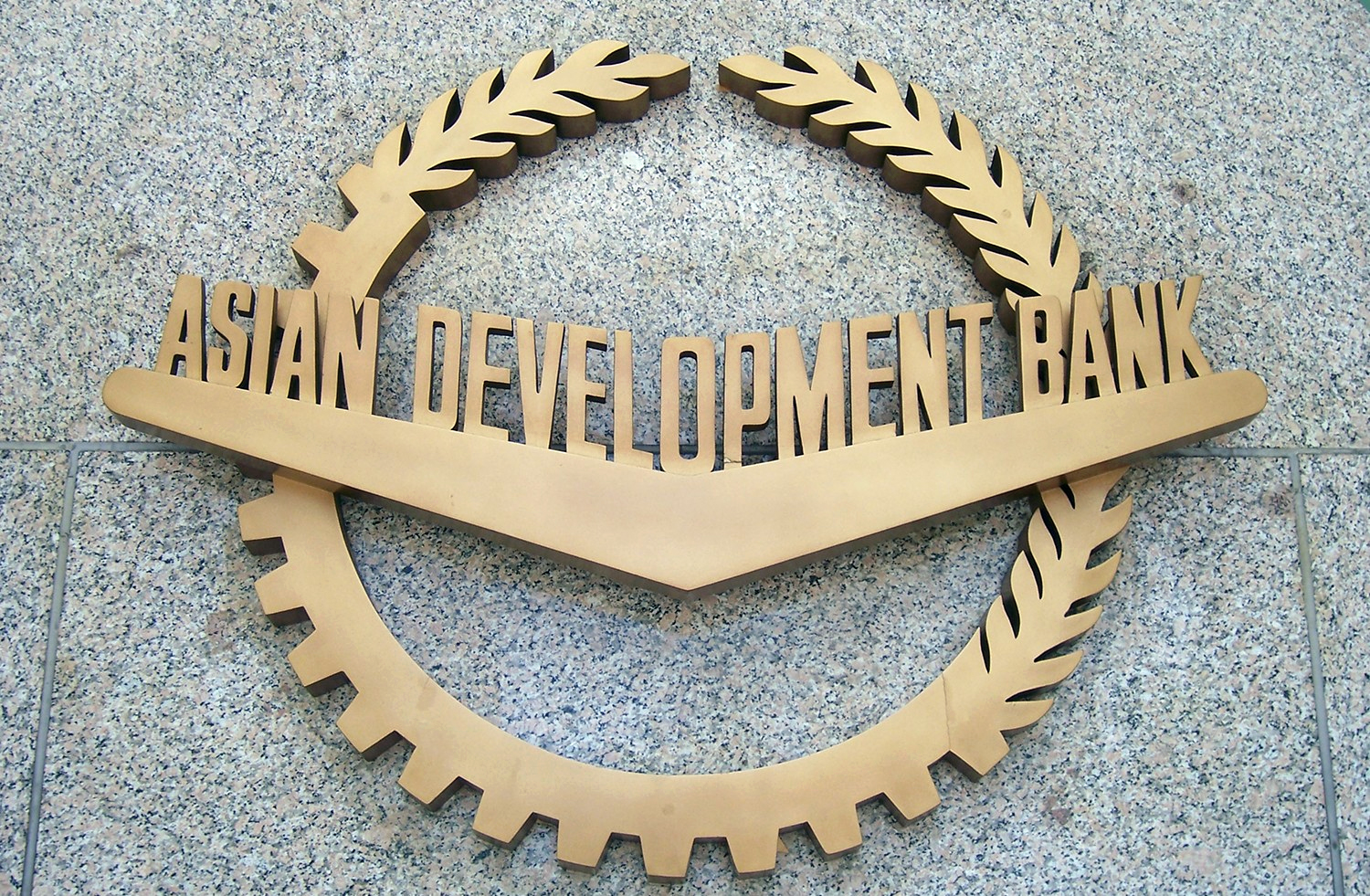
ADB expresses readiness to jointly implement technical assistance projects www.montsame.mn
Minister of Economy and Development Ch. Khurelbaatar met with the representatives led by Mr. Safdar Parvez, Advisor of the East Asia Department, Mr. Pavit Ramachandran, Country Director, and Mrs. Xiaoqin (Emma) Fan, Director of the Public Management, Financial Sector and Regional Cooperation Division.
During the meeting, parties exchanged views on the main economic indicators of Mongolia, the Government’s macroeconomic policy measures, and further cooperation in the field of supporting the private sector and improving infrastructure and border port capacity within the framework of the ‘New Revival Policy’.
Also, the Asian Development Bank expressed its readiness to jointly implement technical assistance projects for strengthening the capacity of the Ministry of Economy and Development.

Mongolian President expresses condolences www.montsame.mn
On September 12, President of Mongolia U.Khurelsukh visited the Embassy of the United Kingdom of Great Britain and Northern Ireland in Ulaanbaatar and signed the book of condolences for Her Majesty Queen Elizabeth II.
The President’s condolences message reads,
“On behalf of the people of Mongolia and myself, I offer heartfelt condolences to the Royal Family and the British people on the passing of Her Majesty Queen Elizabeth II.
Her Majesty was a steadying presence and a symbol of unity to Britain, the Commonwealth, and the whole world for seventy years of historic changes, development as well as times of difficulties.
Her solemn legacy will forever remain in our hearts.
Yours sincerely,
President of Mongolia KHURELSUKH UKHNAA”.
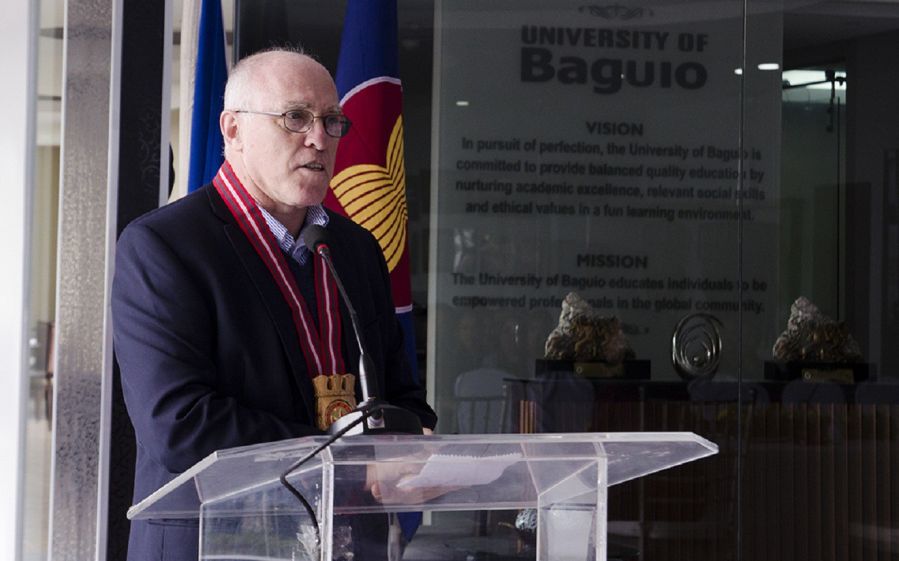
President of Mongolia gives highest state award to outgoing U.S. Ambassador www.akipress.com
President of Mongolia Khurelsukh Ukhnaa received outgoing Ambassador of the United States of America to Mongolia Michael Klecheski.
The President of Mongolia thanked Michael Klecheski for his valuable contribution to the development of relations and cooperation between the two countries.
The signing of the second compact agreement between the government of Mongolia and the American Millennium Challenge Corporation became especially important for increasing the water supply of Ulaanbaatar and reducing the negative effects of water shortages, the President noted.
During his stay in Mongolia, Ambassador Michael Klecheski observed the democratic process and development of Mongolia and expressed his satisfaction with the active development of relations and cooperation even during the pandemic.
The President of Mongolia also issued a decree and awarded the Ambassador the Order of Altan Gadas - the Polar Star in recognition of his contribution, work and efforts in strengthening cooperation and on the occasion of the 35th anniversary of diplomatic relations between Mongolia and the United States.
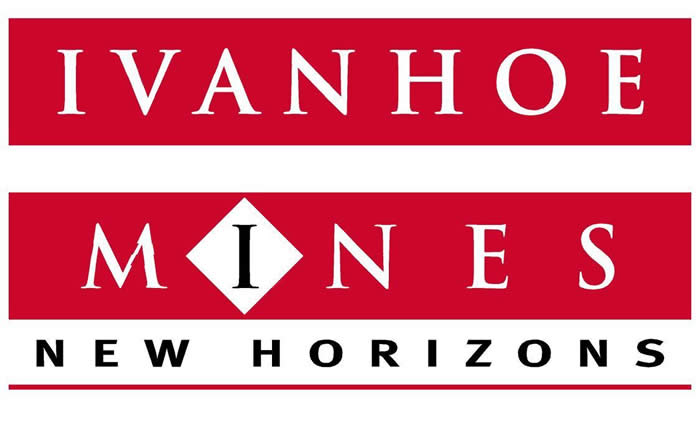
Ivanhoe, Gecamines kick off construction at Kipushi zinc mine in DRC www.mining.com
Canada’s Ivanhoe Mines (TSX: IVN) (OTCQX: IVPAF) and Congo’s state mining company Gécamines have begun construction activities at the historic Kipushi underground zinc-copper mine, which they plan returning to production by late 2024.
In a breaking-ground ceremony, the companies’ joint venture, Kipushi Corporation, said pre-production capital costs, including contingency, was estimated at $382 million.
It noted that the use of existing, rehabilitated surface and underground infrastructure would allow the JV to keep costs relatively low while taking two years to reach production.
“Kipushi is exceptional, not only because of the renowned Big Zinc deposit, which is one of the world’s richest orebodies, but more importantly because of the people of Kipushi and the unique partnerships that make today’s ceremony possible,” Ivanhoe Mines’ president, Marna Cloete, said in a statement.
The Kipushi 2022 feasibility study envisions an 800,000-tonne-per-annum concentrator and underground mine, producing an average of 240,000 tonnes of zinc anually over a 14-year mine life.
The companies said that once in production, Kipushi would be the world’s highest-grade major zinc mine, with an average head grade of 36.4% over the first five years of production.
Ivanhoe, Gecamines kick off construction at Kipushi zinc mine in DRC
Jean-Michel Sama Lukonde, Prime Minister of the DRC (right) and the government delegation were welcomed by Marna Cloete, President of Ivanhoe Mines (centre), and Louis Watum, General Manager of Kipushi Corporation (left).
At a zinc price of $1.40 per pound, the after-tax net present value (NPV) at an 8% real discount rate is $1.4 billion, with an after-tax real internal rate of return (IRR) of 54%. The current spot zinc price is $1.46 per pound.
Ivanhoe has also signed a memorandum of understanding (MOU) with the provincial government of Haut-Katanga to study options for upgrading the DRC-Zambia border crossing, in the town of Kipushi, for commercial imports and exports.
The plan is to build a dedicated, commercial border post for the Kipushi mine and upgrade the existing one in the town of Kipushi, which currently only serves local traffic between DRC and Zambia.
The mine has a long and storied history as a major producer of copper and zinc. Built and then operated by Union Minière for 42 years, it began mining a reported 18% copper deposit from a surface open pit in 1924. It was the world’s richest copper mine at the time.
Kipushi then transitioned to become Africa’s richest underground copper, zinc and germanium mine. Gécamines gained control of the mine in 1967 and operated it until 1993, when it was placed on care and maintenance due to a combination of economic and political factors.
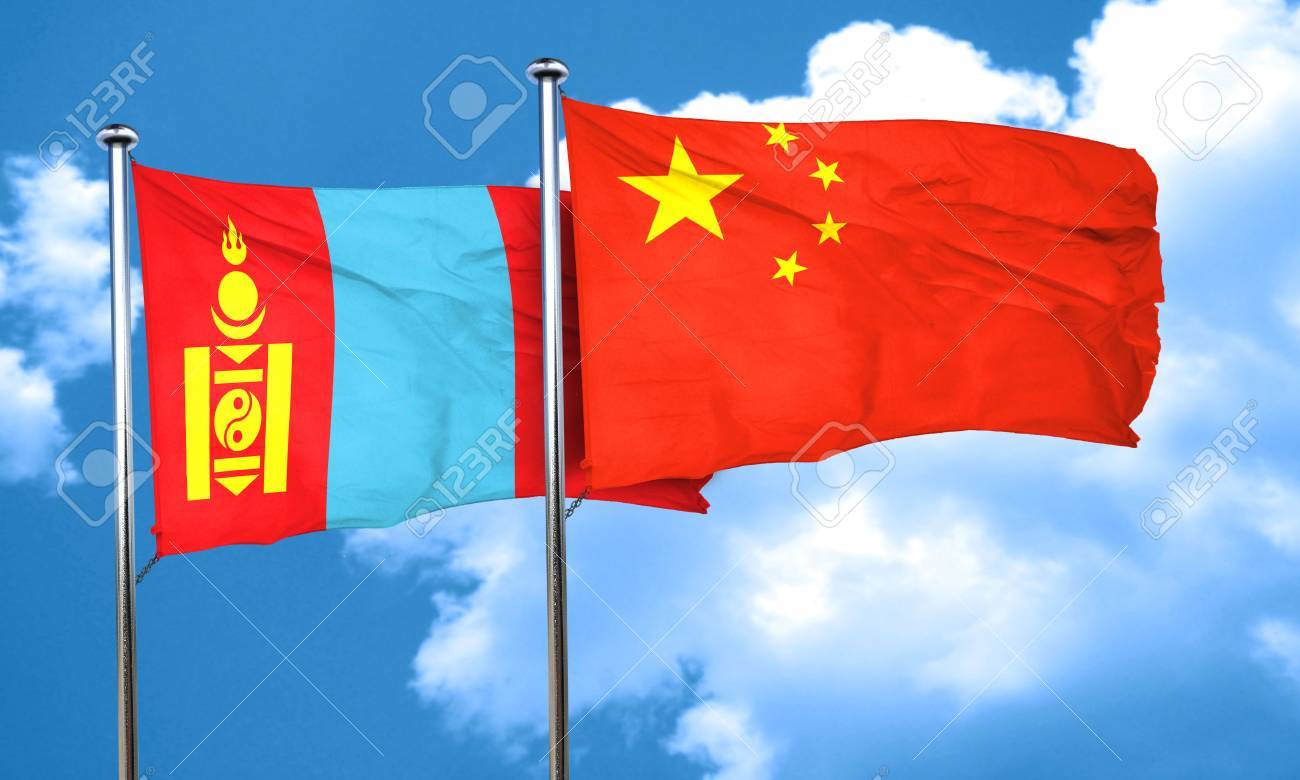
Top Chinese legislator pays official goodwill visit to Mongolia www.xinhuanet.com
Li Zhanshu, chairman of China's National People's Congress (NPC) Standing Committee, paid an official goodwill visit to Mongolia from Saturday to Monday, at the invitation of Chairman of Mongolia's State Great Hural (Parliament) Gombojav Zandanshatar.
During his visit, Li met with Mongolian President Ukhnaa Khurelsukh and Prime Minister Luvsannamsrai Oyun-Erdene, and held talks with Zandanshatar.
When meeting with the Mongolian president, Li conveyed cordial greetings and best wishes from Chinese President Xi Jinping to Khurelsukh.
Li said that China and Mongolia are good neighbors that cannot be moved away or exchanged for gold, and that developing the good-neighborly friendship is in line with the fundamental and long-term interests of the two countries.
Under the strategic guidance of Xi and Mongolian leaders, the China-Mongolia comprehensive strategic partnership has been continuously lifted to higher levels, he said.
Since the onset of COVID-19, the two sides have joined hands to fight the epidemic and gifted one another with sheep and tea, which has become a much-told story attesting to their friendship, he said.
China, Li said, has always upheld the neighborhood policy of amity, sincerity, mutual benefit and inclusiveness and has been actively developing its friendly cooperative relationship with Mongolia.
He expressed the hope that the two sides further deepen political mutual trust, continue to firmly support each other on the issues related to their core interests and major concerns, strengthen coordination and cooperation in international and regional affairs, and push forward multilateral and bilateral win-win cooperation.
Khurelsukh asked Li to convey his sincere greetings to President Xi, saying that Mongolia is sincerely glad about the historic achievements made in the cause of socialism with Chinese characteristics under the leadership of President Xi and the Communist Party of China (CPC).
Noting that the Mongolia-China friendly cooperation is a model for the development of state-to-state relations, Khurelsukh expressed the hope that the two sides strengthen high-level exchanges, deepen political mutual trust, and expand exchanges and cooperation in various fields, so as to push bilateral relations to higher levels, and jointly promote the development of the two countries and the prosperity and stability of Asia.
The exchanges between the legislative bodies of the two countries are of great significance to deepening the good-neighborly friendship between Mongolia and China and enriching the comprehensive strategic partnership between the two countries, he added.
When meeting with Oyun-Erdene, Li said that it is the common goal of China and Mongolia to develop the economy, improve people's livelihood and strengthen the country and enrich the people, adding that the two countries enjoy distinct economic complementarities and huge potential for cooperation.
China is willing to strengthen development strategic alignment and policy communication and coordination with Mongolia to further promote infrastructural connectivity and promote the process of regional integration, he said.
China stands ready to work with Mongolia on customs clearance at ports under the pandemic situation, implement existing cooperation projects, carry out green energy cooperation and expand trade exchanges to realize coordinated development and mutual benefit of the two countries, he added.
The two sides can also strengthen exchanges and cooperation between political parties and young people, as well as cultural exchanges, Li said.
For his part, Oyun-Erdene said that developing good-neighborly friendship and mutually beneficial cooperation with China is the primary goal of Mongolia's foreign policy, and China's rapid development is a great opportunity for Mongolia's development and revitalization.
Mongolia is willing to actively deepen cooperation in the fields of economy and trade, logistics, ports, resources and education, and promote the alignment between Mongolia's New Revival Policy and the China-proposed Belt and Road Initiative, he said.
During the talks with Zandanshatar, Li said that China and Mongolia should be good neighbors with frequent exchange of visits, good friends conducting mutually-beneficial cooperation, and partners in multilateral cooperation, so as to better benefit the two countries and their people.
The legislative bodies of the two countries should actively implement the important consensus reached by the leaders of the two countries, strengthen the exchange of experience in state governance and legislative work, and provide legal safeguards for promoting bilateral cooperation in various fields, Li said.
In addition, he said that the two countries should strengthen coordination on multilateral occasions such as the Inter-Parliamentary Union and speak with one voice regarding upholding multilateralism and improving the global governance system from the perspective of legislative bodies.
For his part, Zandanshatar said that friendly exchanges between the legislative bodies of the two countries are an important part of bilateral relations. He expressed the hope that the two legislative bodies deepen exchanges between their special committees and friendship groups.
He noted that the State Great Hural (Parliament) of Mongolia is ready to make positive efforts to enhance political mutual trust between Mongolia and China, promote practical cooperation and deepen friendship between the people of the two countries.
Li briefed the Mongolian side about the upcoming 20th National Congress of the CPC.
The Mongolian side noted that it will firmly adhere to the one-China principle, actively support the Global Development Initiative and the Global Security Initiative proposed by President Xi, and is willing to make joint efforts with the Chinese side to push for new development of the Mongolia-China comprehensive strategic partnership.
The Mongolian side also wished the 20th National Congress of the CPC a success.
During his visit in Mongolia, Li also toured the "Mongolian nomadism" grassland and ecological areas. ■
Li Zhanshu, chairman of China's National People's Congress (NPC) Standing Committee, holds talks with Chairman of Mongolia's State Great Hural (Parliament) Gombojav Zandanshatar in Ulan Bator, Mongolia, Sept. 11, 2022. Li paid an official goodwill visit to Mongolia from Saturday to Monday, at the invitation of Zandanshatar. (Xinhua/Zhang Ling)
Li Zhanshu, chairman of China's National People's Congress (NPC) Standing Committee, meets with Mongolian Prime Minister Luvsannamsrai Oyun-Erdene in Ulan Bator, Mongolia, Sept. 11, 2022. Li paid an official goodwill visit to Mongolia from Saturday to Monday, at the invitation of Chairman of Mongolia's State Great Hural (Parliament) Gombojav Zandanshatar. (Xinhua/Pang Xinglei)

Top seeds Mongolia U21 and France face early challenges at FIBA 3X3 Nations League Final 2022 www.fiba3x3.com
CONSTANTA (Romania) - Top seeds Mongolia U21 (men's) and France (women's) will be tested in pool play as the schedule was announced for the much anticipated FIBA 3x3 Nations League Final 2022, which will take place in the picture perfect city of Constanta, on the shores of the Black Sea, on September 14-16.
After hosting multiple high level international 3x3 events in the past and a Europe Cup Qualifier earlier this year, Constanta continues to be a prime destination for 3x3 with the Nations League Final (and the Women's Series Final, which will be held on September 17-18).
In the men's, Mongolia U21 receive top billing and headline Pool A. Though they are the top seed based on the country's federation ranking, the winners of the U21 Asia conference will may not enter as favorites given that they will face Japan, the winners of the (U23) Asia conference. To make matters worse, the Romanian hosts will complete the pool.
Pool B features an impressive Spanish team, which knocked out powerhouses like France, Germany and the Netherlands in the Europe West conference and 2 of the most talented U21 teams in the field: Lithuania U21 and Israel U21 - led by the one-two punch of sniper Yonatan Levy and Gill Noyovitch - who beat all the U23 teams in the Europe Central conference en route to the Final.
No.3 seed Lithuania are hoping to continue the hoops crazy country's impressive results in 3x3 international competitions in 2022. They do battle with Israel and Egypt, who won their Conference at home with 21-year-old showstopper Ibrahim Hesham Amin Ibrahim a stand out.
Pool D sees a bucket load of young talent with No.4 seed France U21 battling the confident Czech Republic U21, who were eye-catching in the U21 Europe East Conference and led by dominant big fella Martin Svoboda, and Rwanda.
Pools Men's
Pool A: Mongolia U21, Japan, Romania
Pool B: Lithuania U21, Israel U21, Spain
Pool C: Lithuania, Israel, Egypt
Pool D: France U21, Czech Republic U21, Rwanda
In the women's, No.1 seed France are hoping to continue their remarkable year in 3x3 after taking out the Crelan FIBA 3x3 World Cup 2022 and recently completed FIBA 3x3 Europe Cup 2022.
France's chances of adding more silverware to their stacked trophy cabinet look very realistic after they completed a near flawless campaign in the Europe West Conference on home soil.
It won't be easy for them against Italy, who finished top of Europe South Conference where Sara Madera was unstoppable, and Africa North Conference winner Egypt.
France's depth of talent is underlined with their U21 team the No.2 seed but they face tough tasks against host Romania and hoops power USA.
China's women teams are proven big game performers and they are steeling themselves for a big run in Constanta. Boasting young stars FIBA 3x3 Asia Cup 2022 gold medalist Kun Huang and the towering Mingling Chen (6ft. 4, 1.92m), China flexed their muscle in the Asia Conference.
The No.3 seed will have blockbusters against lethal Lithuania and the always entertaining Hungary in a Pool C that surely is the 'Group of Death'.
Last but certainly not least, young sensations Japan U21 and Lithuania U21 will meet in a Pool D showdown, while Kenya should not be overlooked.
Pools Women's
Pool A: France, Italy, Egypt
Pool B: France U21, Romania, USA,
Pool C: China, Lithuania, Hungary
Pool D: Japan U21, Lithuania U21, Kenya
The FIBA 3x3 Nations League Final is organized by the Romanian Basketball Federation, together with Sport Arena, and is supported by the Constanta City Hall and CSM Constanta.
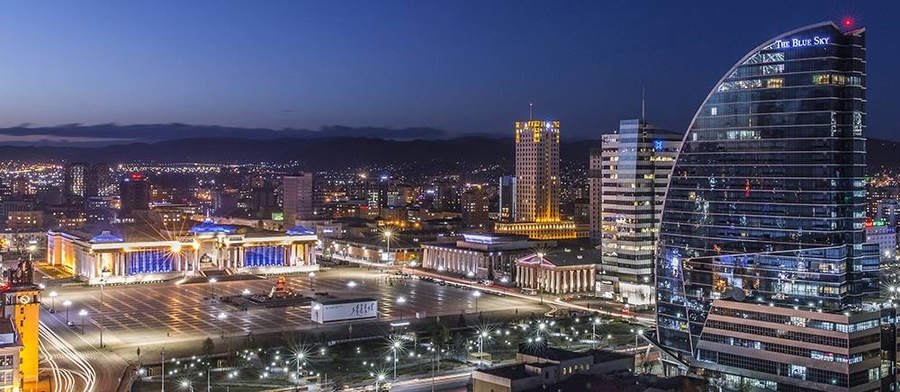
Mongolia has started issuing e-visas to save time and money for foreign nationals traveling to Mongolia www.immigration.gov.mn
Mongolia has started issuing e-visas to save time and money for foreign nationals traveling to Mongolia. Citizens of the countries on this list can apply for Mongolian e-visa from anywhere in the world.
Types of e-visas that can be issued:
Tourist /K2/
Participant in cultural and sports competition /K4/
Transit /K6/
How to apply for an e-visa:
Go to www.evisa.mn
Fill out the visa application accurately and completely
Pay e-visa fee online
Visa application reviewal
If approved, your ETA /Electronic Travel Authorization/ will be sent to your e-mail address
Processing steps and time:
Applications are received 24/7
Officers of the Immigration Agency of Mongolia will review your visa application documents and determine whether you meet the qualifications for visa approval
Your application will be processed within 3 working days/72 hours.
Arriving in Mongolia with e-visa
Print out ETA or save it in your smartphone, present at Immigration Check Post you’re your passport, where your eVisa will be scanned.
Things to keep in mind, when applying for an e-visa:
Accurately and completely fill e-visa application form
Passport must be valid for at least 180 days when applying for an e-visa.
It’s against the law to do activities other than your purpose stated in your evisa
Obtaining a visa does not guarantee your entry into Mongolia.
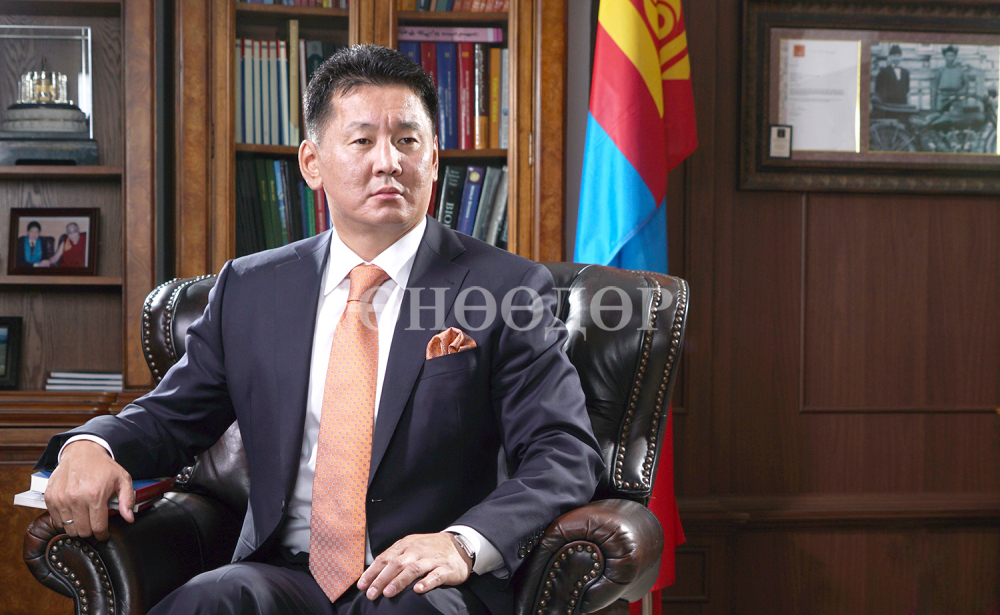
Mongolian president invites Kim Jong Un to visit whenever ‘comfortable’ www.nknews.org
Mongolia has invited Kim Jong Un to visit “at a comfortable time,” state-run media reported Sunday, less than two weeks after South Korean foreign minister Park Jin visited the country and called for more robust ties between Seoul and Ulaanbaatar.
The Korean Central News Agency (KCNA) said Sunday that President Ukhnaagiin Khurelsukh extended the request in a letter to the North Korean leader marking DPRK’s founding anniversary last week.
“Mutual top-level and high-level visits are of important significance in improving bilateral relations and strengthening political trust,” Khurelsukh reportedly wrote, inviting Kim Jong Un to the Central Asian country for a “warm and friendly conversation.”
The Mongolian president suggested Kim come “at a comfortable time” once the COVID-19 pandemic situation is “resolved,” adding that he would be interested in visiting Pyongyang as well.
The letter was carried in the domestic-facing Rodong Sinmun newspaper on Monday morning as well, but neither KCNA nor the paper stated whether Kim wrote back to Khurelsukh or whether he plans to accept the invitation.
A number of dignitaries have visited Mongolia in recent months, including the U.N. Secretary-General António Guterres, South Korean foreign minister Park Jin, U.S. Assistant Secretary of the State Department Daniel Kritenbrink in August, as well as Japanese foreign minister Yoshimasa Hayashi in April.
The U.N. secretary-general visited Mongolia as part of a trip to promote nuclear nonproliferation, noting Ulaanbaatar’s close ties with Pyongyang.
Meanwhile, Park carried a letter from South Korean President Yoon Suk-yeol to President Khurelsukh calling Mongolia an “important” economic and democratic partner in the region. The foreign minister also said Seoul would like to bolster cooperation with resource-rich Ulaanbaatar to “stabilize and diversify the supply chain.”
Russian foreign minister Sergei Lavrov also visited the country in July, and China’s top diplomat Wang Yi visited the following month.
FRIEND TO ALL
Mongolia maintains a friendly relationship with both Koreas and has hosted high-level meetings with and about North Korea in the past. Mongolia is one of the last remaining countries staffing its embassy in Pyongyang and sends regular congratulatory and other messages to Kim Jong Un to mark various DPRK events.
The Central Asian country also offered to host the first summit between Kim and Donald Trump in 2018, and multiple media reports at the time suggested Mongolia was one of the finalists to host the meeting. Former President Tsakhiagiin Elbegdorj described Mongolia then as “neutral territory” that has helped facilitate meetings between the DPRK and other countries.
North Korean and Mongolian officials engaged in working-level talks to discuss the option before Singapore was ultimately decided as the location of the first-ever U.S.-DPRK summit.
On March 16, 2018, then-Chief of Staff of the Office of the President of Mongolia Z. Enkhbold met DPRK Ambassador O Sung Ho to discuss Mongolia potentially hosting the 2018 U.S.-DPRK summit meeting | Image: Mongolia Presidential Office
The last time North Korean state media reported that a Mongolian leader invited Kim Jong Un to Ulaanbaatar was in Oct. 2018. Then-Mongolian President Tsakhiagiin Elebegdorj visited Pyongyang in Oct. 2013, although he did not meet Kim Jong Un.
The Mongolian president visited the DPRK in 2004 as well, meeting the then-nominal head of state Kim Yong Nam at the time instead of Kim Jong Il. North Korea’s founding leader, Kim Il Sung, visited Mongolia in 1956 and 1988.
Edited by Arius Derr
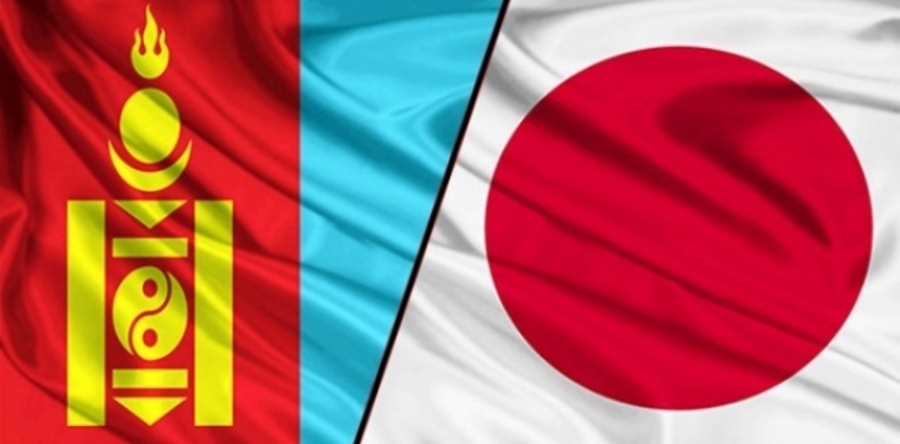
JDS Application in 2022 is now open for Mongolian young highly capable government officials www.jica.go.jp
The Ministry of Education and Science of Mongolia and Japan International Cooperation Agency (JICA) launched the application of The Project for Human Resource Development Scholarship by Japanese Grant Aid (JDS) 2022 on September 1, 2022. JDS Project is funded by the Government of Japan through official development assistance (ODA). Its objective is to provide Mongolian government officials with opportunities for obtaining Master's Degree (2-year course) and Doctoral Degree (3-year course) at Japanese universities in order to support the human resource development of the Government of Mongolia, and eventually to extend and strengthen the bilateral relations between Japan and Mongolia. Totally 16 young government officials, who are expected to play leadership role in Mongolia, will be selected for Japanese academic year 2022 (enrolment in September, 2023). The application deadline is November 2, 2022 for Master's Course and December 9, 2022 for Doctoral Course.
JDS Project has started in Mongolia since 2001 and has dispatched 400 JDS fellows (Including JDS fellows dispatched this year) to Japan up to now. All study fields have been settled based on the Socio-Economic Development Strategy of the Government of Mongolia and Japan's assistance policy for Mongolia.
Information on study fields are attached herewith and shown in English as to keep technical terms precise.
Recruitment Seminars are scheduled to provide more detailed information on JDS Project and how to prepare application documents for prospective applicants.
Date: September 7 (Wed) 14:00 - 15:30 Online (Zoom)
Date: September 17 (Sat) 11:00 - 12:30 Online (Zoom)
Date: September 22 (Thu) 18:30 - 20:00 Venue: Mongolia Japan Center 2nd Floor
Date: October 1 (Sat) 11:00 - 12:30 Venue: Mongolia Japan Center 2nd Floor
Also Information Sessions by Universities to provide more information on accepting university is to be scheduled. Date and time will be shown on JDS website once fixed. All seminars are planned to be provided online and pre-registration is required.
For further information, please visit JDS website or contact the JICE JDS Project Office in Mongolia.
JICE JDS Project Office in Mongolia
Address: #201, Mongolia-Japan Center Building, University Avenue, Sukhbaatar Dist, Central P.O Box 917, Ulaanbaatar13
TEL: 9549-5902, 9978-5902 / Email: jds.mongolia@jice.org
Office Hour: 9:00-12:30, 14:00-17:30, Monday to Friday
Website: http://jds-scholarship.org/ (external link)
Facebook: @JDSMongolia
- «
- 1
- 2
- 3
- 4
- 5
- 6
- 7
- 8
- 9
- 10
- 11
- 12
- 13
- 14
- 15
- 16
- 17
- 18
- 19
- 20
- 21
- 22
- 23
- 24
- 25
- 26
- 27
- 28
- 29
- 30
- 31
- 32
- 33
- 34
- 35
- 36
- 37
- 38
- 39
- 40
- 41
- 42
- 43
- 44
- 45
- 46
- 47
- 48
- 49
- 50
- 51
- 52
- 53
- 54
- 55
- 56
- 57
- 58
- 59
- 60
- 61
- 62
- 63
- 64
- 65
- 66
- 67
- 68
- 69
- 70
- 71
- 72
- 73
- 74
- 75
- 76
- 77
- 78
- 79
- 80
- 81
- 82
- 83
- 84
- 85
- 86
- 87
- 88
- 89
- 90
- 91
- 92
- 93
- 94
- 95
- 96
- 97
- 98
- 99
- 100
- 101
- 102
- 103
- 104
- 105
- 106
- 107
- 108
- 109
- 110
- 111
- 112
- 113
- 114
- 115
- 116
- 117
- 118
- 119
- 120
- 121
- 122
- 123
- 124
- 125
- 126
- 127
- 128
- 129
- 130
- 131
- 132
- 133
- 134
- 135
- 136
- 137
- 138
- 139
- 140
- 141
- 142
- 143
- 144
- 145
- 146
- 147
- 148
- 149
- 150
- 151
- 152
- 153
- 154
- 155
- 156
- 157
- 158
- 159
- 160
- 161
- 162
- 163
- 164
- 165
- 166
- 167
- 168
- 169
- 170
- 171
- 172
- 173
- 174
- 175
- 176
- 177
- 178
- 179
- 180
- 181
- 182
- 183
- 184
- 185
- 186
- 187
- 188
- 189
- 190
- 191
- 192
- 193
- 194
- 195
- 196
- 197
- 198
- 199
- 200
- 201
- 202
- 203
- 204
- 205
- 206
- 207
- 208
- 209
- 210
- 211
- 212
- 213
- 214
- 215
- 216
- 217
- 218
- 219
- 220
- 221
- 222
- 223
- 224
- 225
- 226
- 227
- 228
- 229
- 230
- 231
- 232
- 233
- 234
- 235
- 236
- 237
- 238
- 239
- 240
- 241
- 242
- 243
- 244
- 245
- 246
- 247
- 248
- 249
- 250
- 251
- 252
- 253
- 254
- 255
- 256
- 257
- 258
- 259
- 260
- 261
- 262
- 263
- 264
- 265
- 266
- 267
- 268
- 269
- 270
- 271
- 272
- 273
- 274
- 275
- 276
- 277
- 278
- 279
- 280
- 281
- 282
- 283
- 284
- 285
- 286
- 287
- 288
- 289
- 290
- 291
- 292
- 293
- 294
- 295
- 296
- 297
- 298
- 299
- 300
- 301
- 302
- 303
- 304
- 305
- 306
- 307
- 308
- 309
- 310
- 311
- 312
- 313
- 314
- 315
- 316
- 317
- 318
- 319
- 320
- 321
- 322
- 323
- 324
- 325
- 326
- 327
- 328
- 329
- 330
- 331
- 332
- 333
- 334
- 335
- 336
- 337
- 338
- 339
- 340
- 341
- 342
- 343
- 344
- 345
- 346
- 347
- 348
- 349
- 350
- 351
- 352
- 353
- 354
- 355
- 356
- 357
- 358
- 359
- 360
- 361
- 362
- 363
- 364
- 365
- 366
- 367
- 368
- 369
- 370
- 371
- 372
- 373
- 374
- 375
- 376
- 377
- 378
- 379
- 380
- 381
- 382
- 383
- 384
- 385
- 386
- 387
- 388
- 389
- 390
- 391
- 392
- 393
- 394
- 395
- 396
- 397
- 398
- 399
- 400
- 401
- 402
- 403
- 404
- 405
- 406
- 407
- 408
- 409
- 410
- 411
- 412
- 413
- 414
- 415
- 416
- 417
- 418
- 419
- 420
- 421
- 422
- 423
- 424
- 425
- 426
- 427
- 428
- 429
- 430
- 431
- 432
- 433
- 434
- 435
- 436
- 437
- 438
- 439
- 440
- 441
- 442
- 443
- 444
- 445
- 446
- 447
- 448
- 449
- 450
- 451
- 452
- 453
- 454
- 455
- 456
- 457
- 458
- 459
- 460
- 461
- 462
- 463
- 464
- 465
- 466
- 467
- 468
- 469
- 470
- 471
- 472
- 473
- 474
- 475
- 476
- 477
- 478
- 479
- 480
- 481
- 482
- 483
- 484
- 485
- 486
- 487
- 488
- 489
- 490
- 491
- 492
- 493
- 494
- 495
- 496
- 497
- 498
- 499
- 500
- 501
- 502
- 503
- 504
- 505
- 506
- 507
- 508
- 509
- 510
- 511
- 512
- 513
- 514
- 515
- 516
- 517
- 518
- 519
- 520
- 521
- 522
- 523
- 524
- 525
- 526
- 527
- 528
- 529
- 530
- 531
- 532
- 533
- 534
- 535
- 536
- 537
- 538
- 539
- 540
- 541
- 542
- 543
- 544
- 545
- 546
- 547
- 548
- 549
- 550
- 551
- 552
- 553
- 554
- 555
- 556
- 557
- 558
- 559
- 560
- 561
- 562
- 563
- 564
- 565
- 566
- 567
- 568
- 569
- 570
- 571
- 572
- 573
- 574
- 575
- 576
- 577
- 578
- 579
- 580
- 581
- 582
- 583
- 584
- 585
- 586
- 587
- 588
- 589
- 590
- 591
- 592
- 593
- 594
- 595
- 596
- 597
- 598
- 599
- 600
- 601
- 602
- 603
- 604
- 605
- 606
- 607
- 608
- 609
- 610
- 611
- 612
- 613
- 614
- 615
- 616
- 617
- 618
- 619
- 620
- 621
- 622
- 623
- 624
- 625
- 626
- 627
- 628
- 629
- 630
- 631
- 632
- 633
- 634
- 635
- 636
- 637
- 638
- 639
- 640
- 641
- 642
- 643
- 644
- 645
- 646
- 647
- 648
- 649
- 650
- 651
- 652
- 653
- 654
- 655
- 656
- 657
- 658
- 659
- 660
- 661
- 662
- 663
- 664
- 665
- 666
- 667
- 668
- 669
- 670
- 671
- 672
- 673
- 674
- 675
- 676
- 677
- 678
- 679
- 680
- 681
- 682
- 683
- 684
- 685
- 686
- 687
- 688
- 689
- 690
- 691
- 692
- 693
- 694
- 695
- 696
- 697
- 698
- 699
- 700
- 701
- 702
- 703
- 704
- 705
- 706
- 707
- 708
- 709
- 710
- 711
- 712
- 713
- 714
- 715
- 716
- 717
- 718
- 719
- 720
- 721
- 722
- 723
- 724
- 725
- 726
- 727
- 728
- 729
- 730
- 731
- 732
- 733
- 734
- 735
- 736
- 737
- 738
- 739
- 740
- 741
- 742
- 743
- 744
- 745
- 746
- 747
- 748
- 749
- 750
- 751
- 752
- 753
- 754
- 755
- 756
- 757
- 758
- 759
- 760
- 761
- 762
- 763
- 764
- 765
- 766
- 767
- 768
- 769
- 770
- 771
- 772
- 773
- 774
- 775
- 776
- 777
- 778
- 779
- 780
- 781
- 782
- 783
- 784
- 785
- 786
- 787
- 788
- 789
- 790
- 791
- 792
- 793
- 794
- 795
- 796
- 797
- 798
- 799
- 800
- 801
- 802
- 803
- 804
- 805
- 806
- 807
- 808
- 809
- 810
- 811
- 812
- 813
- 814
- 815
- 816
- 817
- 818
- 819
- 820
- 821
- 822
- 823
- 824
- 825
- 826
- 827
- 828
- 829
- 830
- 831
- 832
- 833
- 834
- 835
- 836
- 837
- 838
- 839
- 840
- 841
- 842
- 843
- 844
- 845
- 846
- 847
- 848
- 849
- 850
- 851
- 852
- 853
- 854
- 855
- 856
- 857
- 858
- 859
- 860
- 861
- 862
- 863
- 864
- 865
- 866
- 867
- 868
- 869
- 870
- 871
- 872
- 873
- 874
- 875
- 876
- 877
- 878
- 879
- 880
- 881
- 882
- 883
- 884
- 885
- 886
- 887
- 888
- 889
- 890
- 891
- 892
- 893
- 894
- 895
- 896
- 897
- 898
- 899
- 900
- 901
- 902
- 903
- 904
- 905
- 906
- 907
- 908
- 909
- 910
- 911
- 912
- 913
- 914
- 915
- 916
- 917
- 918
- 919
- 920
- 921
- 922
- 923
- 924
- 925
- 926
- 927
- 928
- 929
- 930
- 931
- 932
- 933
- 934
- 935
- 936
- 937
- 938
- 939
- 940
- 941
- 942
- 943
- 944
- 945
- 946
- 947
- 948
- 949
- 950
- 951
- 952
- 953
- 954
- 955
- 956
- 957
- 958
- 959
- 960
- 961
- 962
- 963
- 964
- 965
- 966
- 967
- 968
- 969
- 970
- 971
- 972
- 973
- 974
- 975
- 976
- 977
- 978
- 979
- 980
- 981
- 982
- 983
- 984
- 985
- 986
- 987
- 988
- 989
- 990
- 991
- 992
- 993
- 994
- 995
- 996
- 997
- 998
- 999
- 1000
- 1001
- 1002
- 1003
- 1004
- 1005
- 1006
- 1007
- 1008
- 1009
- 1010
- 1011
- 1012
- 1013
- 1014
- 1015
- 1016
- 1017
- 1018
- 1019
- 1020
- 1021
- 1022
- 1023
- 1024
- 1025
- 1026
- 1027
- 1028
- 1029
- 1030
- 1031
- 1032
- 1033
- 1034
- 1035
- 1036
- 1037
- 1038
- 1039
- 1040
- 1041
- 1042
- 1043
- 1044
- 1045
- 1046
- 1047
- 1048
- 1049
- 1050
- 1051
- 1052
- 1053
- 1054
- 1055
- 1056
- 1057
- 1058
- 1059
- 1060
- 1061
- 1062
- 1063
- 1064
- 1065
- 1066
- 1067
- 1068
- 1069
- 1070
- 1071
- 1072
- 1073
- 1074
- 1075
- 1076
- 1077
- 1078
- 1079
- 1080
- 1081
- 1082
- 1083
- 1084
- 1085
- 1086
- 1087
- 1088
- 1089
- 1090
- 1091
- 1092
- 1093
- 1094
- 1095
- 1096
- 1097
- 1098
- 1099
- 1100
- 1101
- 1102
- 1103
- 1104
- 1105
- 1106
- 1107
- 1108
- 1109
- 1110
- 1111
- 1112
- 1113
- 1114
- 1115
- 1116
- 1117
- 1118
- 1119
- 1120
- 1121
- 1122
- 1123
- 1124
- 1125
- 1126
- 1127
- 1128
- 1129
- 1130
- 1131
- 1132
- 1133
- 1134
- 1135
- 1136
- 1137
- 1138
- 1139
- 1140
- 1141
- 1142
- 1143
- 1144
- 1145
- 1146
- 1147
- 1148
- 1149
- 1150
- 1151
- 1152
- 1153
- 1154
- 1155
- 1156
- 1157
- 1158
- 1159
- 1160
- 1161
- 1162
- 1163
- 1164
- 1165
- 1166
- 1167
- 1168
- 1169
- 1170
- 1171
- 1172
- 1173
- 1174
- 1175
- 1176
- 1177
- 1178
- 1179
- 1180
- 1181
- 1182
- 1183
- 1184
- 1185
- 1186
- 1187
- 1188
- 1189
- 1190
- 1191
- 1192
- 1193
- 1194
- 1195
- 1196
- 1197
- 1198
- 1199
- 1200
- 1201
- 1202
- 1203
- 1204
- 1205
- 1206
- 1207
- 1208
- 1209
- 1210
- 1211
- 1212
- 1213
- 1214
- 1215
- 1216
- 1217
- 1218
- 1219
- 1220
- 1221
- 1222
- 1223
- 1224
- 1225
- 1226
- 1227
- 1228
- 1229
- 1230
- 1231
- 1232
- 1233
- 1234
- 1235
- 1236
- 1237
- 1238
- 1239
- 1240
- 1241
- 1242
- 1243
- 1244
- 1245
- 1246
- 1247
- 1248
- 1249
- 1250
- 1251
- 1252
- 1253
- 1254
- 1255
- 1256
- 1257
- 1258
- 1259
- 1260
- 1261
- 1262
- 1263
- 1264
- 1265
- 1266
- 1267
- 1268
- 1269
- 1270
- 1271
- 1272
- 1273
- 1274
- 1275
- 1276
- 1277
- 1278
- 1279
- 1280
- 1281
- 1282
- 1283
- 1284
- 1285
- 1286
- 1287
- 1288
- 1289
- 1290
- 1291
- 1292
- 1293
- 1294
- 1295
- 1296
- 1297
- 1298
- 1299
- 1300
- 1301
- 1302
- 1303
- 1304
- 1305
- 1306
- 1307
- 1308
- 1309
- 1310
- 1311
- 1312
- 1313
- 1314
- 1315
- 1316
- 1317
- 1318
- 1319
- 1320
- 1321
- 1322
- 1323
- 1324
- 1325
- 1326
- 1327
- 1328
- 1329
- 1330
- 1331
- 1332
- 1333
- 1334
- 1335
- 1336
- 1337
- 1338
- 1339
- 1340
- 1341
- 1342
- 1343
- 1344
- 1345
- 1346
- 1347
- 1348
- 1349
- 1350
- 1351
- 1352
- 1353
- 1354
- 1355
- 1356
- 1357
- 1358
- 1359
- 1360
- 1361
- 1362
- 1363
- 1364
- 1365
- 1366
- 1367
- 1368
- 1369
- 1370
- 1371
- 1372
- 1373
- 1374
- 1375
- 1376
- 1377
- 1378
- 1379
- 1380
- 1381
- 1382
- 1383
- 1384
- 1385
- 1386
- 1387
- 1388
- 1389
- 1390
- 1391
- 1392
- 1393
- 1394
- 1395
- 1396
- 1397
- 1398
- 1399
- 1400
- 1401
- 1402
- 1403
- 1404
- 1405
- 1406
- 1407
- 1408
- 1409
- 1410
- 1411
- 1412
- 1413
- 1414
- 1415
- 1416
- 1417
- 1418
- 1419
- 1420
- 1421
- 1422
- 1423
- 1424
- 1425
- 1426
- 1427
- 1428
- 1429
- 1430
- 1431
- 1432
- 1433
- 1434
- 1435
- 1436
- 1437
- 1438
- 1439
- 1440
- 1441
- 1442
- 1443
- 1444
- 1445
- 1446
- 1447
- 1448
- 1449
- 1450
- 1451
- 1452
- 1453
- 1454
- 1455
- 1456
- 1457
- 1458
- 1459
- 1460
- 1461
- 1462
- 1463
- 1464
- 1465
- 1466
- 1467
- 1468
- 1469
- 1470
- 1471
- 1472
- 1473
- 1474
- 1475
- 1476
- 1477
- 1478
- 1479
- 1480
- 1481
- 1482
- 1483
- 1484
- 1485
- 1486
- 1487
- 1488
- 1489
- 1490
- 1491
- 1492
- 1493
- 1494
- 1495
- 1496
- 1497
- 1498
- 1499
- 1500
- 1501
- 1502
- 1503
- 1504
- 1505
- 1506
- 1507
- 1508
- 1509
- 1510
- 1511
- 1512
- 1513
- 1514
- 1515
- 1516
- 1517
- 1518
- 1519
- 1520
- 1521
- 1522
- 1523
- 1524
- 1525
- 1526
- 1527
- 1528
- 1529
- 1530
- 1531
- 1532
- 1533
- 1534
- 1535
- 1536
- 1537
- 1538
- 1539
- 1540
- 1541
- 1542
- 1543
- 1544
- 1545
- 1546
- 1547
- 1548
- 1549
- 1550
- 1551
- 1552
- 1553
- 1554
- 1555
- 1556
- 1557
- 1558
- 1559
- 1560
- 1561
- 1562
- 1563
- 1564
- 1565
- 1566
- 1567
- 1568
- 1569
- 1570
- 1571
- 1572
- 1573
- 1574
- 1575
- 1576
- 1577
- 1578
- 1579
- 1580
- 1581
- 1582
- 1583
- 1584
- 1585
- 1586
- 1587
- 1588
- 1589
- 1590
- 1591
- 1592
- 1593
- 1594
- 1595
- 1596
- 1597
- 1598
- 1599
- 1600
- 1601
- 1602
- 1603
- 1604
- 1605
- 1606
- 1607
- 1608
- 1609
- 1610
- 1611
- 1612
- 1613
- 1614
- 1615
- 1616
- 1617
- 1618
- 1619
- 1620
- 1621
- 1622
- 1623
- 1624
- 1625
- 1626
- 1627
- 1628
- 1629
- 1630
- 1631
- 1632
- 1633
- 1634
- 1635
- 1636
- 1637
- 1638
- 1639
- 1640
- 1641
- 1642
- 1643
- 1644
- 1645
- 1646
- 1647
- 1648
- 1649
- 1650
- 1651
- 1652
- 1653
- 1654
- 1655
- 1656
- 1657
- 1658
- 1659
- 1660
- 1661
- 1662
- 1663
- 1664
- 1665
- 1666
- 1667
- 1668
- 1669
- 1670
- 1671
- 1672
- 1673
- 1674
- 1675
- 1676
- 1677
- 1678
- 1679
- 1680
- 1681
- 1682
- 1683
- 1684
- 1685
- 1686
- 1687
- 1688
- 1689
- 1690
- 1691
- 1692
- 1693
- 1694
- »






